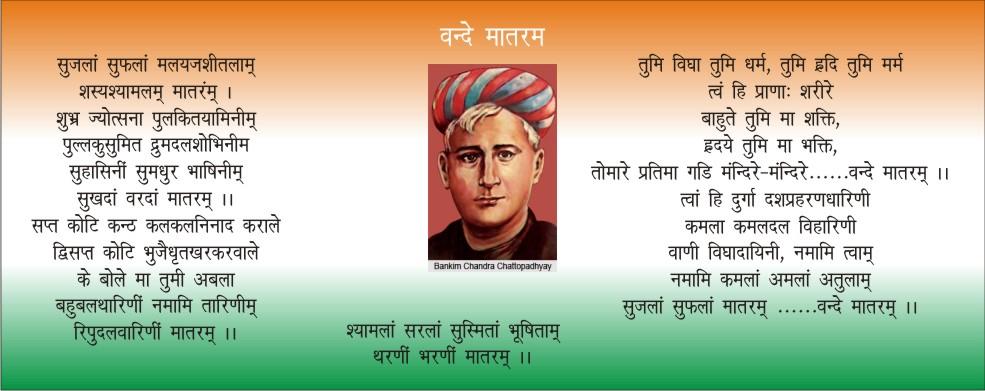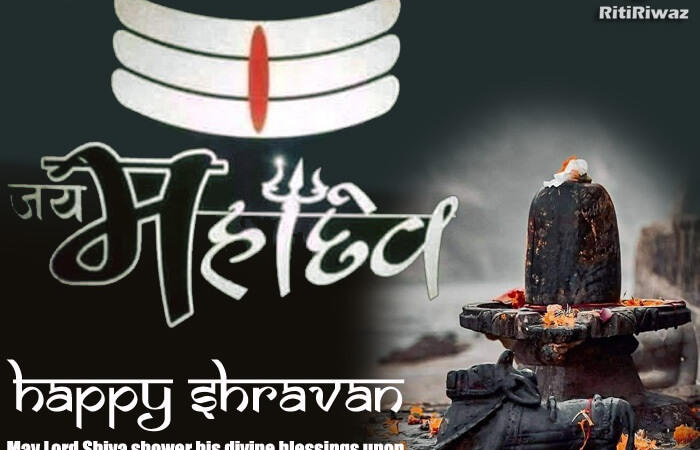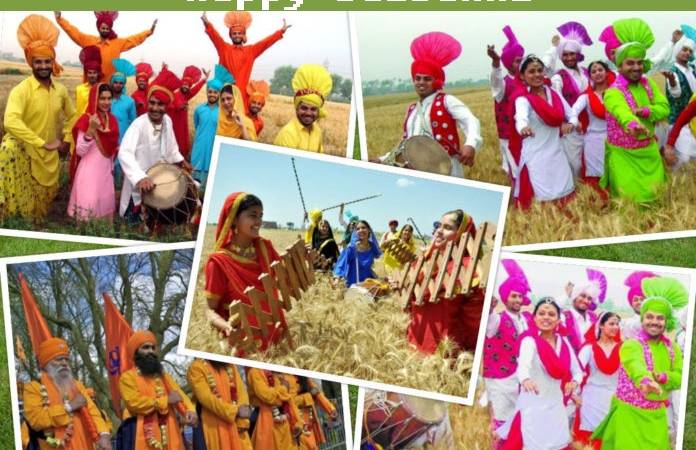National Song Of India | Vande Mataram

The National song Vande Mataram, composed in Sanskrit by Bankimchandra Chatterji, was a source of inspiration to the people in their struggle for freedom. It has an equal status with Jana-Gana-Mana. The first political occasion when it was sung was the 1896 session of the Indian National Congress. The song first appeared in his book ”Anandamatha’‘, published in 1882 amid fears of a ban by the British Raj, though the song itself was actually written six years prior to 1876.
“Vande Mataram” was the national cry for freedom from British oppression during the freedom movement. Large rallies, fermenting initially in West Bengal, in the major metropolis of Calcutta, would work themselves up into a patriotic fever by shouting the slogan “Vande Mataram,” or “Hail to the Mother (land)!”. The British, fearful of the potential danger of an incited Indian populace, at one point, banned the utterance of the motto in public forums and jailed many freedom fighters for disobeying the prescription. To this day, “Vande Mataram” is seen as a national mantra describing the love of patriots for the country of India.
While Vande Mataram was treated as the national anthem of India for a long, ultimately Jana Gana Mana was chosen as the national anthem of independent India. The choice was slightly controversial since the Vande Mataram was the one song that truly depicted the pre-independence national fervor. The song was rejected on the grounds that Muslims felt offended by its depiction of the nation as “Ma Durga“, a Hindu goddess; thus equating the nation with the Hindu conception of shakti, divine feminine dynamic force; and by its origin as part of ”Anandamatha”, a novel they felt had an anti-Muslim message.
Suggested Read: National Anthem Of India
The following is the text of its first stanza:
Vande Mataram!
Sujalaam, suphalaam, malayaja
sheetalaam,
Shasyashyamalaam, Maataram!
Shubhrajyothsna
pulakitayaminiim,
Phullakusumita drumadala shobhiniim,
Suhaasinim sumadhura
bhaashinim,
Sukhadam varadam, Mataram!
Suggested Read: National Emblem Of India
The English translation of the above stanza rendered by Sri Aurobindo is:
I bow to thee, Mother,
richly-watered,
richly-fruited,
cool with the winds of the south,
dark with the crops of
the harvests,
The Mother!
Her night’s rejoicing in the glory of the
moonlight,
her lands clothed beautifully with her trees in flowering
bloom,
sweet of laughter, sweet of speech,
The Mother, giver of boons,
giver of bliss.
Suggested Read: National Symbols Of India






